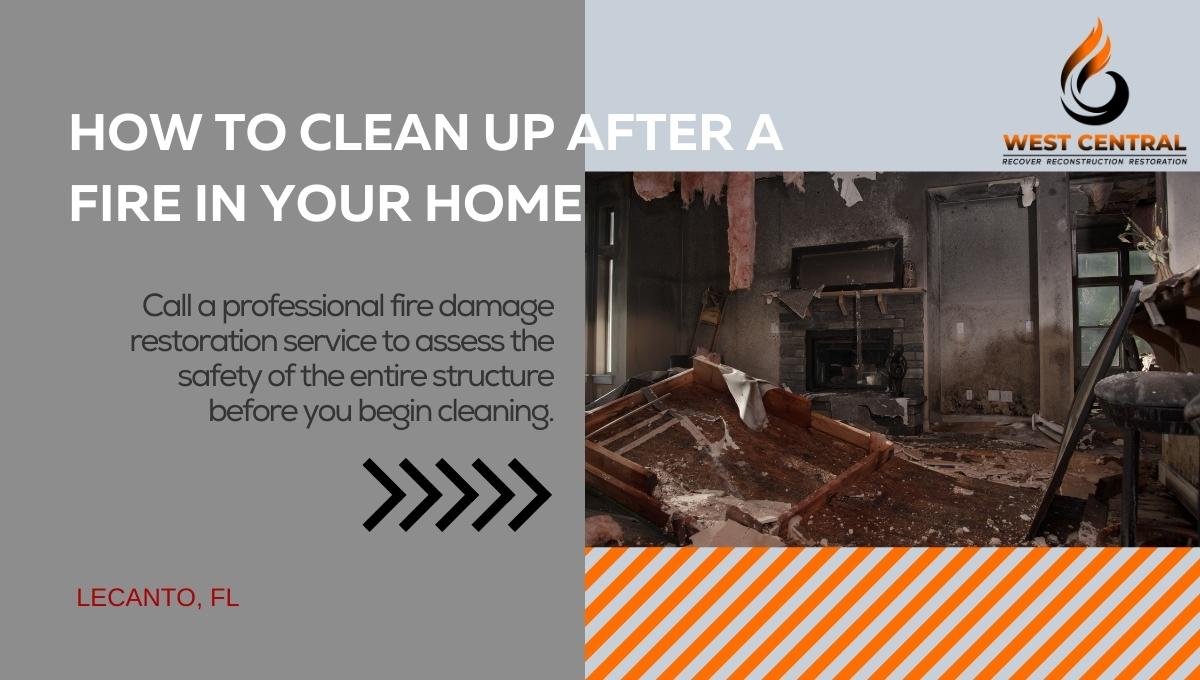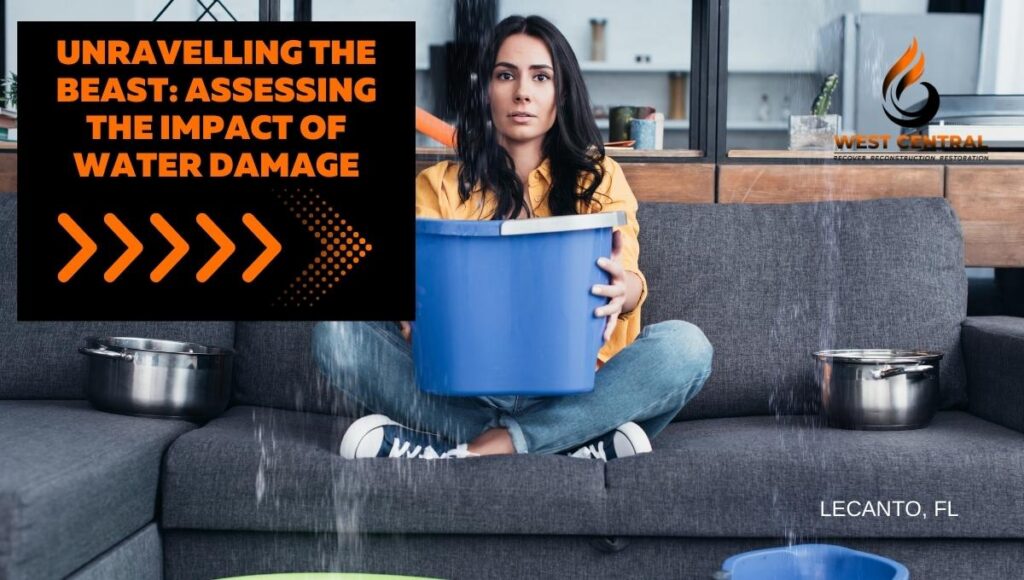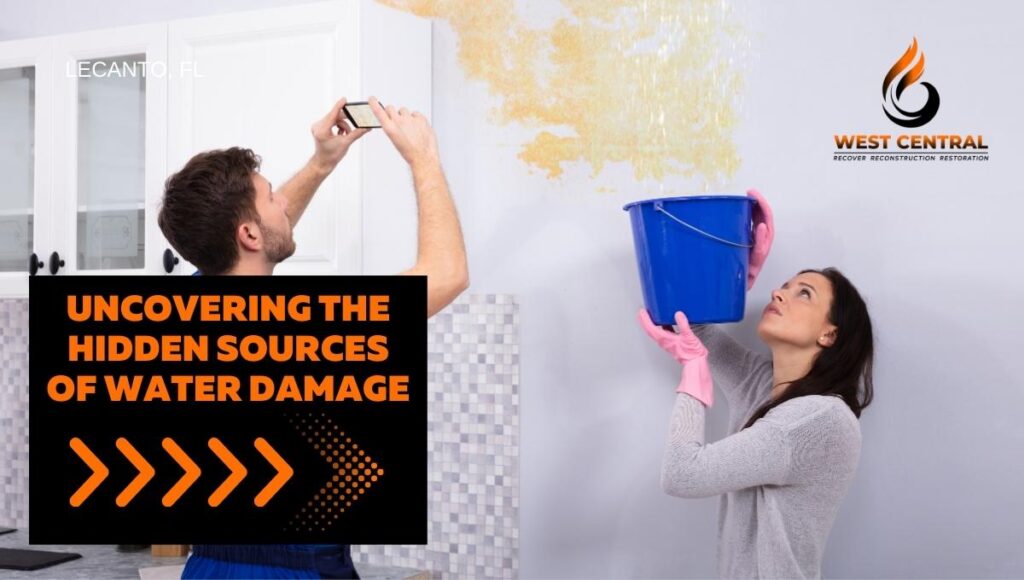 After a fire in your home has been extinguished by firefighters, the process of restoration begins. But before you can do anything inside or around it, make sure the home is structurally safe. Remember, fire can cause both obvious and hidden damages in electrical wiring, wall supports, foundation, deck, roof, porch or entrance.
After a fire in your home has been extinguished by firefighters, the process of restoration begins. But before you can do anything inside or around it, make sure the home is structurally safe. Remember, fire can cause both obvious and hidden damages in electrical wiring, wall supports, foundation, deck, roof, porch or entrance.
Call a professional fire damage restoration service to assess the safety of the entire structure before you begin cleaning. Also, if the damage is big consider letting professionals clean it up as they have the experience and the right cleaning tools for the job.
So how do you clean up after a fire in your home?
- Beware of burned debris and ash
Your home may be structurally sound, but may not be chemically safe due to the burned debris and ash left behind after the fire. Burned debris and ash tend to contain harsh chemicals with potential to damage your lungs, skin or eyes.
For instance, if the chemicals in the ash land on your skin, they may cause a burn, rash, or skin irritation. Also, if the chemicals come into contact with your eyes, they can cause eye damage. Plus, when inhaled, the chemicals may irritate and damage the lungs.
So protect yourself before you begin handling the ash and debris. Wear long pants, long sleeves, protective shoes with closed toes, and an N95 mask. Equally, have your hands covered with thick gloves.
Open all the doors and windows to allow in air. Enough inflow of air will dilute and clear some of the harsh chemicals and lingering smoke. And as you clean up the damage, take short breaks to help you get out to the open air.
- Clean up the damage in a stepwise manner
Following fire damage, generally the entire home will be in such a state that it’s extremely difficult to clean it up. It is advisable to perform the cleaning in a stepwise manner for better efficiency.
So begin by removing all the debris and ash. After that, remove any standing water. Then, replace or repair areas with signs of water damage.
Next begin removing soot and smoke particles from all the areas of the home. This includes clearing vents to get rid of any soot and smoke particles. It also involves a thorough cleaning of the HVAC system to make sure it doesn’t spread soot or smoke particles to other areas of your home.
You will then need to determine items to keep and those to dispose of. All clothing and household items that are burned or damaged beyond repair should be cleared. Of course, this can be an emotionally difficult step but necessary. Try and keep in mind that most of these items are replaceable.
Finally, eliminate the smoky aroma and purify the air to improve air quality throughout your home.
- Cleaning interior surfaces
Begin interior cleaning by first inspecting various surfaces. As you complete the inspection, remove debris, trash and all undamaged items you intend to keep. This will give you a clearer view of the floors, walls, and ceiling, and enable you to determine the extent of the damage.
If there is standing water, remove it before you can clean the surfaces. You can suck up all the standing water into a vacuum and deposit it outside the house away from the foundation. But you can also elect to use a bucket or other container especially if there is only a small amount of water.
As with the water, you should actively remove all loose soot and other debris from the surfaces. Use a large shop vacuum to achieve this step. If there is any mold growth caused perhaps by the water used to put out the fire, contact a professional mold removal service to help with assessment and possibly the cleanup.
Next you can begin cleaning the surfaces. Start by wiping them with a bleach solution to prevent potential mold and mildew growth. A mixture of 1 cup bleach with 1 gallon of water will effectively clean the surfaces without discoloration. An alternative is to apply a homemade mixture of trisodium phosphate, bleach and warm water. These solutions work well for most hard and flat surfaces.
To clean walls, floors and ceilings and remove soot and smoke, deploy a mixture of trisodium phosphate, bleach, and water. For this purpose, mix 6 teaspoonfuls of tri-sodium phosphate, 1 cup of chlorine bleach, and 1 gallon of warm water. Then, put on rubber gloves before you begin using the prepared solution to wipe these surfaces.
Begin at the floor, move to the walls, and work your way up to the ceiling, going one small section at a time. Avoid dumping water over large areas at a time and use small amounts of cleaning solution on limited areas. This will prevent mold and mildew growth. Rinse every small area with warm water immediately after cleaning.
Next, allow the cleaned areas to dry. You can use large fans and also open the windows to hasten the process. Remember, the walls, floors and ceilings should dry faster to avoid mold and mildew growth.
Also, if these steps are unsuccessful, avoid using harsher solutions if you don’t achieve the results you desire. Instead, contact a professional service to help achieve better results or to handle a more substantial damage of the walls or hard-flooring.
- Dealing with smoke and soot in salvageable items
Some furniture, clothes and home accessories that are only slightly damaged may have residual smoke and soot. If you want to salvage those items, quickly clean them of the smoke and soot.
For upholstered furniture that is saturated with water, save the wooden frame by stripping off the fabric and padding to prevent growth of mold and mildew. Then clean both the hidden and exposed components of the furniture with appropriate solutions.
If you intend to throw furniture and other items into a washer, have a professional cleaner tackle the stains and smoke odors. Ensure that only clothes labeled as dry clean are taken to the dry cleaner and that they are treated to remove smoke odors as part of their cleaning process.
For soot-stained washable fabrics, follow the washing recommendations on the label. Ideally, these items should be cleaned using oxygen-based bleach and a heavy-duty detergent. And if some stains still remain after washing, mix a fresh solution of oxygen bleach with warm water and allow the items to soak for at least 4 hours or overnight before you rewash.
If there are washable items that are not soot-stained but smell smoky, you can wash them as usual though adding 1 cup of baking soda to the final rinse cycle. And if the smoky smell persists, fill the washer with water and 2 cups of baking soda, allow the items to soak overnight, and rewash as usual.
For leather shoes, clothes, and various accessories, wipe them down with a damp cloth soaked in plain water. Then blot dry. Allow all the leather items to dry, but away from direct sunlight and heat sources. Once dried, clean with a saddle cloth and apply a leather conditioner to restore their supple finish. For best results, secure the services of a professional cleaner to help you with leather and suede coats.
Place papers and books that have a smoky smell in a large, sealable plastic container. Add a powdered odor eliminator and seal the container for at least 48 hours. Next, remove the books, smell them, and assess if the odor has been successfully removed. If the odor persists, reseal for a few more days.
- Cleaning the exterior of your home
Clean the exterior surfaces using a power washer. Alternatively, you can use a stiff brush with a mixture of water and borax or other safe cleaning solution.
But as much as possible, avoid cleaning the exterior by hand as it would require a substantial amount of time. So instead consider renting a power washer or hire a professional if cleaning a large area.
After power washing, clean the porch, deck, gutters, driveway, sidewalks and windows. These surfaces tend to collect dust and other debris during a fire. A power washer will help you clean the areas well, but again you can complete the cleaning faster and more thoroughly by hiring a team of professional cleaners.
- Disposing must-toss items
After fire damage, there are often items that simply must be tossed because there is more damage than immediately noticed or there may be more extensive contamination.
Generally, the 7 items that should be thrown out after a fire in your home are electrical equipment, burned clothes, large textiles, furniture and mattresses, cosmetics and toiletries, medicine, and food items.
Small electrical appliances, entertainment equipment, and other electrical devices must never be used after a fire before they are checked for heat and water damage. In fact, when not sure about their condition, it is advisable to toss them as re-using such items carries the risk of starting another fire.
It is not advisable to clean and wear burned clothes. The smoke and soot chemicals in them may irritate your skin. You may also inhale harmful chemicals into your respiratory system. Plus, they may carry the smell of chemicals used by firefighters, which may be harmful.
Apart from clothes, larger textiles like rugs, bedding, drapes, and carpet tend to absorb smells and chemicals of smoke, soot, and firefighting chemicals. And because they are too large to clean effectively when burned or compromised, consider throwing them out if practical.
The potency of medicines can be affected by the heat, water, soot, smoke, and chemicals present in your home during a fire. So, check with your doctor but more generally throw away medicines and buy new over-the-counter drugs or request your doctor prescribe a refill.
Throw away all the food in your home during the fire, even non-perishable food as they will be compromised by the fire. Some food, like canned and sealed foods, may appear okay after a fire, but the heat from the flames will still activate bacterial growth. Likewise, water and chemicals used to extinguish fire can contaminate food.
You must throw away food in open containers, rusting or bulging cans, charred food, food with fire extinguisher dust on them, and perishable food left at room temperature for too long. Also, throw away anything you suspect is contaminated and any food stored in permeable packaging like cloth, cardboard, or thin plastic bags.
Dependable, efficient fire damage clean up services
After a fire in your home, the subsequent clean up can be an emotional and stressful undertaking. That is why you need the help of professionals to manage the situation more safely and efficiently.
At West Central Equipment and Restoration, we offer emergency fire damage clean up services in Lecanto, Florida. We arrive quickly, help with safety inspections and cataloging of losses, and proceed to conduct a methodical and efficient cleanup.
You can trust us to provide sound advice throughout the process and to handle your home with utmost care. For more information on fire damage restoration, visit the site “West Central Equipment and Restoration.”











